Hassani S. Mathematical Methods: For Students of Physics and Related Fields
Подождите немного. Документ загружается.

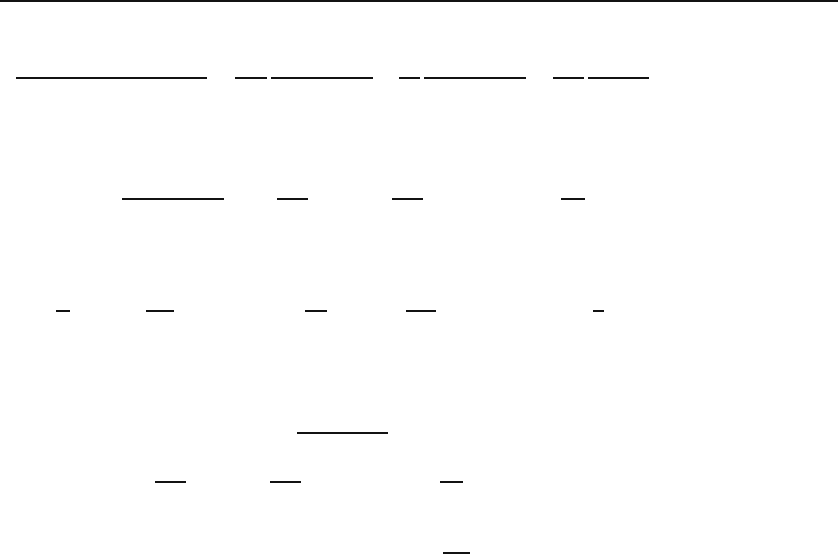
29.3 The Laplace Transform 721
Using partial fraction techniques, we can write this as
Aω
0
(s
2
+ ω
2
0
)(s
2
+ γs + ω
2
0
)
=
A
γω
0
s
s
2
+ γs + ω
2
0
+
A
ω
0
1
s
2
+ γs + ω
2
0
−
A
γω
0
s
s
2
+ ω
2
0
.
Each term can now be inverted using the results we have obtained in several exam-
ples. Denoting the final result by Φ(t), we get
Φ(t) ≡ L
−1
L[f](s)
s
2
+ γs + ω
2
0
= −
A
γω
0
cos ω
0
t +
A
γω
0
e
−γt/2
cos Ωt +
γ
2Ω
sin Ωt
.
Note that Φ(0) = 0 as expected from the discussion above. Differentiating, we
obtain
˙
Φ(t)=
A
γ
sin ω
0
t −
A
2ω
0
e
−γt/2
cos Ωt +
γ
2Ω
sin Ωt
+
A
γω
0
e
−γt/2
−ΩsinΩt +
γ
2
cos Ωt
.
It is readily verified that
˙
Φ(0) = 0 as explained above. Substituting Φ(t)forthe
last term of (29.70) yields
x(t)=e
−γt/2
x
0
cos Ωt +
˙x
0
+ x
0
γ/2
Ω
sin Ωt
−
A
γω
0
cos ω
0
t +
A
γω
0
e
−γt/2
cos Ωt +
γ
2Ω
sin Ωt
. (29.71)
After a long time (i.e., as t →∞), the terms containing an exponential—the so-
called transient terms—will be negligible and x(t) →−
A
γω
0
cos ω
0
t as expected from
the elementary analysis of the same problem.
We can understand this interesting behavior of Φ(t)intermsoftheprop-
erties of convolution. Let g(t) be the inverse transform of 1/(s
2
+ γs + ω
2
0
).
Then invoking Box 29.3.1, the last term of (29.70) can be written as
Φ(t)=L
−1
.
L[f](s) · L[g](s)
/
=(f ∗ g)(t)=
#
t
0
f(u)g(t − u)du,
whose derivative is (see Box 3.2.2)
˙
Φ(t)=f(t)g(0) +
#
t
0
f(u)˙g(t − u)du.
It is now clear why Φ(0) = 0. As for the derivative, we see that
˙
Φ(0) =
f(0)g(0). But g(t) is given by (29.69) which is clearly 0 at t =0.
29.3.4 Inverse of Laplace Transform
As mentioned earlier, the procedure for inverting a Laplace transform is im-
portant in solving differential equations, as the technique—like any other
transform—yields the transform of the solution, and to get the solution, one
has to invert that transform. So far, we have used various tricks and prop-
erties of the Laplace transform to get from F (s) ≡ L[f](s)tof(t). Now, we
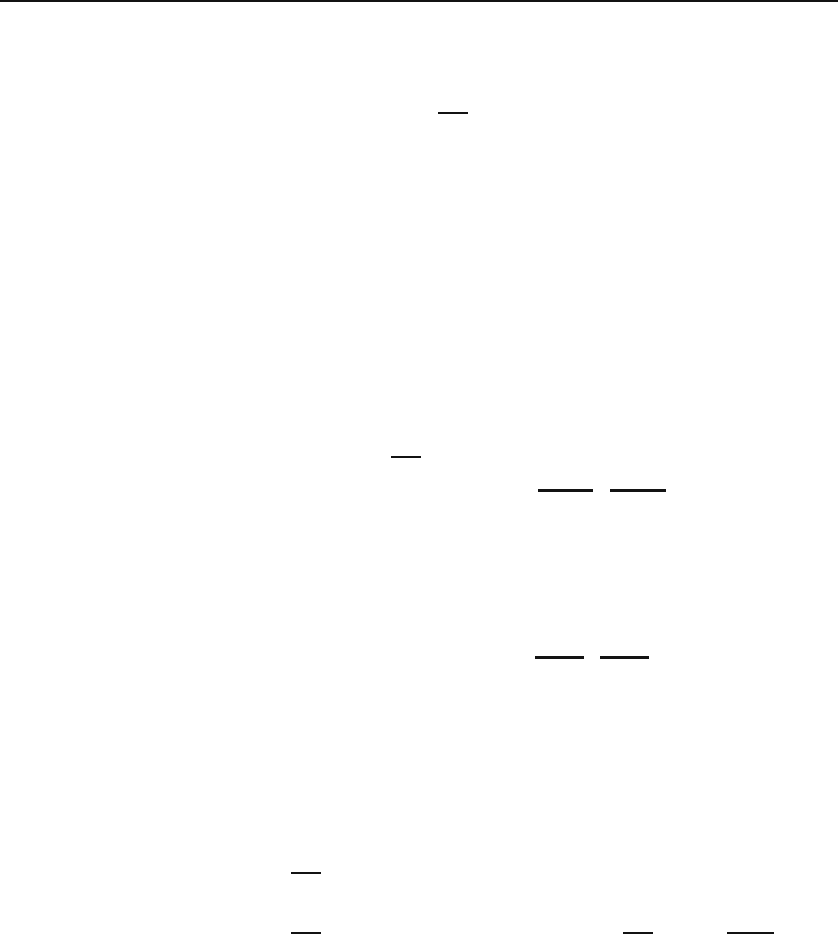
722 Integral Transforms
provide a general formula that can always be used to yield the function. The
procedure is the Mellin inversion integral:
Mellin inversion
integral
f(t)=
1
2πi
#
γ+i∞
γ−i∞
F (s)e
st
ds. (29.72)
The integration is along a line, called the Bromwich contour, parallel to
Bromwich contour
the imaginary axis of the complex s plane. The real number γ is arbitrary as
long as the integration line is to the right of all the singularities of F (s). To
find the actual value of the integral, one closes the contour with an infinite
semicircle to the left of the line and uses the residue theorem.
To prove that the right-hand side of (29.72) is indeed f(t), substitute the
definition of F (s),
F (s)=
#
∞
0
f(τ)e
−sτ
dτ,
in the integral and switch the order of integrations to get
RHS =
1
2πi
#
∞
0
f(τ)dτ
#
γ+i∞
γ−i∞
e
s(t−τ)
ds
Denote this by J
. (29.73)
Introduce a new variable of integration σ by s = γ + iσ in the inner integral
to get
J =
#
∞
−∞
e
(γ+iσ)(t−τ )
idσ = ie
γ(t−τ )
#
∞
−∞
e
iσ(t−τ)
dσ
=2πδ(t−τ) by (18.28)
=2πiδ(t − τ ).
The last step follows because δ(t − τ) = 0 unless t = τ in which case the
exponent of the exponential is zero. Substituting this in (29.73) and noting
that τ>0, we get RHS = f (t).
To see why the integration line must lie to the right of all singularities,
take the Laplace transform of both sides of (29.72):
L[f(t)] =
1
2πi
#
∞
0
e
−st
#
γ+i∞
γ−i∞
F (σ)e
σt
dσ
dt
=
1
2πi
#
γ+i∞
γ−i∞
F (σ)dσ
#
∞
0
e
(σ−s)t
dt = −
1
2πi
#
γ+i∞
γ−i∞
F (σ)
σ − s
dσ,
assuming that Re(s) > Re(σ)=γ.IfF (σ) is analytic to the right of the
Bromwich contour, then closing the infinite semicircle on the right, there will
be a single pole at σ = s inside the closed contour, and the residue theorem
gives the value of the integral as −2πiF(s), with the negative sign coming
from the clockwise integration. If any of the poles of F were on the right of
the Bromwich contour we would not obtain −2πiF(s) for the integration.
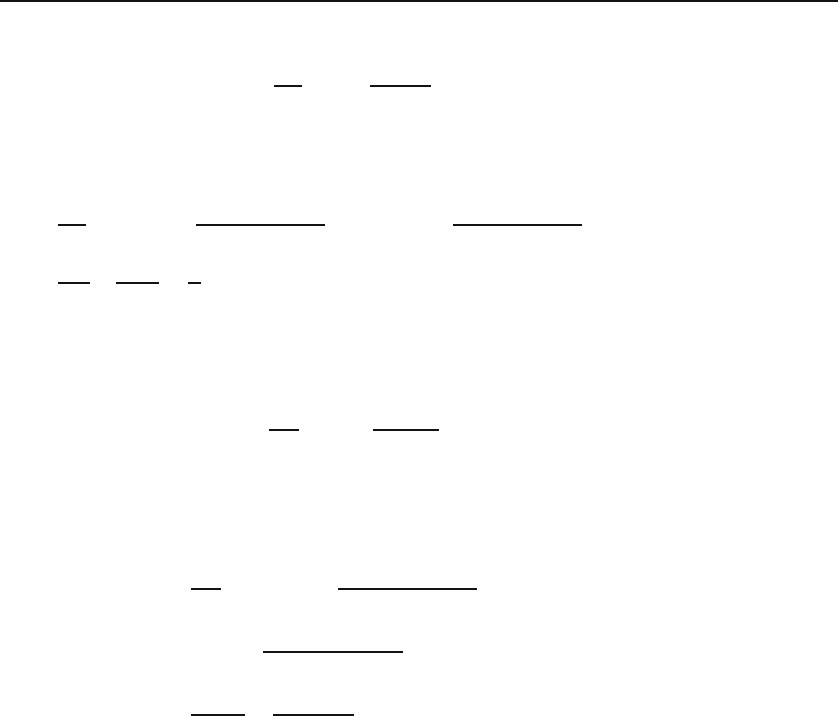
29.4 Problems 723
Example 29.3.8. Let us find the inverse Laplace transform of F (s)=1/(s
2
+ω
2
).
This is given by
f(t)=
1
2πi
#
γ+i∞
γ−i∞
e
st
s
2
+ ω
2
ds
where the contour of integration includes the infinite semicircle to the left. The
poles of the integrand are at ±iω,soaslongasγ>0, the contour encloses both
poles. The residue theorem then yields
f(t)=
1
2πi
0
2πi
A
Res
e
st
(s − iω)(s + iω)
s=iω
+Res
e
st
(s − iω)(s + iω)
s=−iω
B1
=
e
iωt
2iω
+
e
−iωt
−2iω
=
1
ω
sin ωt
which is the expected result (see Example 29.3.1).
We can similarly find the inverse Laplace transform of F (s)=s/(s
2
+ ω
2
):
f(t)=
1
2πi
#
γ+i∞
γ−i∞
se
st
s
2
+ ω
2
ds
The contour of integration again includes the infinite semicircle to the left,
and the poles of the integrand are at ±iω, as above. The residue theorem now
yields
f(t)=
1
2πi
(
2πi
Res
se
st
(s − iω)(s + iω)
s=iω
+Res
se
st
(s − iω)(s + iω)
s=−iω
B1
=
iωe
iωt
2iω
+
−iωe
−iωt
−2iω
=cosωt
which is also treated in Example 29.3.1.
29.4 Problems
29.1. Find directly the Fourier transform of
(a) the constant function f(x)=C,and
(b) the Dirac delta function δ(x).
29.2. Show the second identity in (29.8).
29.3. Show that the inverse of a sine transform is another sine transform.
29.4. Show (29.9), the linearity property of Fourier transform and its inverse.
29.5. Suppose that
˜
f(k) is the inverse Fourier transform of f (x). Show that
the inverse Fourier transform of f(x + a)ise
iak
˜
f(k).

724 Integral Transforms
29.6. Show that if f(t)=cosω
0
t,then
˜
f(ω)=
π
2
[δ(ω − ω
0
)+δ(ω + ω
0
)] .
29.7. Show that
(a) g(x) is real if and only if ˜g
∗
(k)=˜g(−k),
(a) g(x) is imaginary if and only if ˜g
∗
(k)=−˜g(−k), and
(c) if g(x) is even (odd), then ˜g(k) is also even (odd).
29.8. Evaluate the Fourier transform of
g(x)=
0
b −b|x|/a if |x| <a,
0if|x| >a.
29.9. Let
f(t)=
0
sin ω
0
t if |t| <T,
0if|t| >T.
Show that
˜
f(ω)=
1
√
2π
(
sin[(ω − ω
0
)T ]
ω − ω
0
−
sin[(ω + ω
0
)T ]
ω + ω
0
)
.
Verify the uncertainty relation ΔωΔt ≈ 4π.
29.10. If f(x)=g(x + a), show that
˜
f(k)=e
−iak
˜g(k).
29.11. For a>0 find the Fourier transform of f (x)=e
−a|x|
.Is
˜
f(k)sym-
metric? Is it real? Verify the uncertainty relations.
29.12. The displacement of a damped harmonic oscillator is given by
f(t)=
0
Ae
−αt
e
iω
0
t
if t>0,
0ift<0.
Find
˜
f(ω) and show that the frequency distribution |
˜
f(ω)|
2
is given by
|
˜
f(ω)|
2
=
A
2
2π
1
(ω − ω
0
)
2
+ α
2
.
29.13. Prove the convolution theorem for Fourier transform:
convolution
theorem for
Fourier transform
#
∞
−∞
f(x)g(y − x) dx =
#
∞
−∞
˜
f(k)˜g(k)e
iky
dk.
What will this give when y =0?
29.14. Prove Parseval’s relation for Fourier transforms:
Parseval’s relation
#
∞
−∞
f(x)g
∗
(x) dx =
#
∞
−∞
˜
f(k)˜g
∗
(k) dk.

29.4 Problems 725
29.15. Find the sine and cosine transform of e
−ax
.
29.16. Following Example 29.1.6, substitute the Fourier Transform of the
wave function Ψ(x, t) in the one-dimensional wave equation
1
c
2
∂
2
Ψ
∂t
2
=
∂
2
Ψ
∂x
2
,
and solve the differential equation in t to get
˜
Ψ(k, t)=C(k)e
±ickt
.
Assuming that the initial shape of the wave Ψ(x, 0) is given by a function
f(x), show that the solution Ψ(x, t) can be written as
Ψ(x, t)=f (x ±ct).
29.17. Show the relation used in Example 29.3.6:
π
2
− tan
−1
s
ω
=tan
−1
ω
s
.
Hint: Let x denote the left-hand side and α =tan
−1
(s/ω). Take the tan of
both sides of the definition of x and use cot α =tan(π/2 − α)=1/ tan α.
29.18. Let f(t)=sinωt be the periodic function of (29.61) and verify that
the equation holds (for T =2π/ω). Do the same for f(t)=cosωt.
29.19. Find the Laplace transform of the periodic sawtooth function with
period T defined by
V (t)=V
0
t
T
for 0 ≤ t<T.
29.20. Find the Laplace transform of 2t +4e
2t
− 3cos3t.
29.21. Compute L[cosh
2
γt]andL[sinh
2
γt].
29.22. Compute L[cos
2
ωt]andL[sin
2
ωt] directly from the definition of Laplace
transform. Now show that
L[cos
2
ωt]=L[1] −L[sin
2
ωt].
29.23. A function N(t) is called a null function if
#
t
0
N(u) du =0
for all t>0. Show that L[N(t)] = 0.
29.24. Compute L[e
2t
sin 3t], L[t
2
e
−γt
], L
−1
[e
−2s
/s
3
], and
L
−1
a
s
−
s
s
2
+1
e
−bs
.
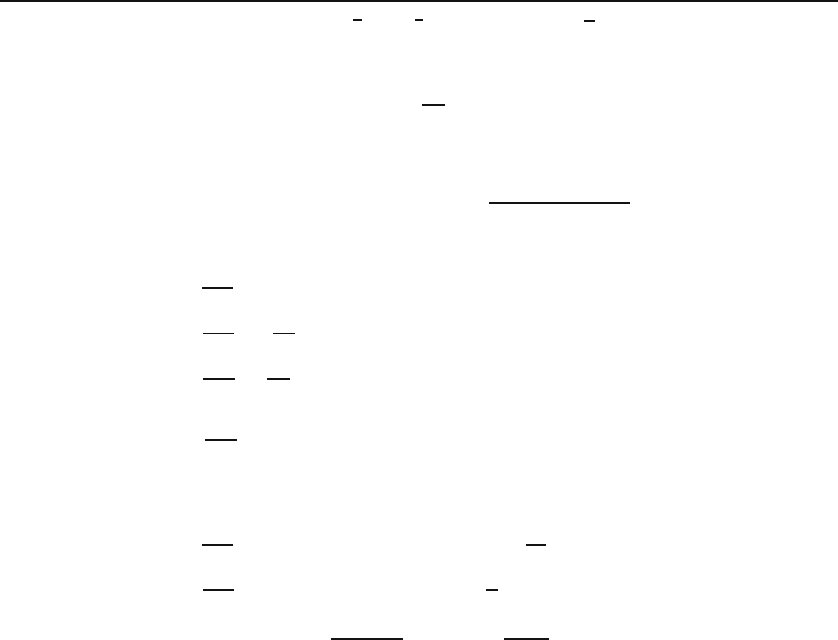
726 Integral Transforms
29.25. Find L[e
3t
/
√
t], L[
√
t], and L
−1
[e
−2s
/
√
s].
29.26. (a) Show that
∂
∂ν
t
ν−1
= t
ν−1
ln t.
(b) Now use (29.52) to prove that
L[t
ν−1
ln t]=
Γ
(ν) − Γ(ν)lns
s
ν
.
29.27. Using Laplace transform, solve the following initial-value problems
(a)
d
2
x
dt
2
+4x =sint, x(0) = 1, ˙x(0) = 0
(b)
d
2
x
dt
2
− 2
dx
dt
− 3y = te
t
,x(0) = 2, ˙x(0) = 1
(c)
d
2
x
dt
2
+
dx
dt
= θ(1 − t),x(0) = 1, ˙x(0) = −1, where θ is the step
function.
(d)
d
2
x
dt
2
+ x = θ(π − t)cost, x(0) = 0, ˙x(0) = 0, where θ is the step
function.
29.28. Using Laplace transform, solve the following boundary-value problems
(a)
d
2
x
dt
2
+ ω
2
x =sinωt, x(0) = 1,x(
π
2ω
)=π.
(b)
d
2
x
dt
2
+ ω
2
x = t, x(0) = 1, ˙x(
π
ω
)=−1.
29.29. Find L
−1
[
1
2s
2
+2s+5
]andL
−1
[
1
s
2
−a
2
] using Mellin inversion integral
(29.72).
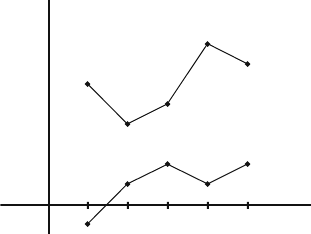
Chapter 30
Calculus of Variations
In a typical multivariable extremum problem, you are given a function of n
variables f (x
1
,x
2
,...,x
n
) and asked to find those n values of the variables
that maximize or minimize the function. The procedure is, of course, to set
the partial derivative of the function with respect to each variable equal to
zero and solve the resulting equations.
Geometrically, f is a function in an n-dimensional space, and the problem
is to find the point in that space at which f has the highest (or lowest)
value compared to the neighboring points. There is another geometric way
of looking at the extremum problem. Think of (x
1
,x
2
,...,x
n
) as a piecewise New way of
looking at the
multivariable
extremum problem
linear path in a two-dimensional coordinate system. The horizontal axis is
restricted to the values 1, 2,...,n, and for each of these values i the value of
the corresponding variable x
i
determines one point with coordinates (i, x
i
).
Connecting the neighboring points by a straight line segment produces the
path. Figure 30.1 shows a couple of such paths.
Figure 30.1: For each integer i between 1 and n, pick the real number x
i
and draw
a point with coordinates (i, x
i
). Connect these points to form a path. Two such paths
are shown for n =5.

728 Calculus of Variations
The extremum problem can now be stated in terms of paths: Find the path
for which f has either the largest or the smallest value compared with its value
at the neighboring paths. And to do so, we differentiate with respect to a point
of the path. But let’s be more general in anticipation of the problems typical
of this chapter. Let x
α
be a variable where α is not necessarily an integer
between 1 and n. Differentiate the function with respect to x
α
and set the
result equal to zero:
∂f
∂x
α
=
n
i=1
∂f
∂x
i
∂x
i
∂x
α
=
n
i=1
∂f
∂x
i
δ
αi
=0. (30.1)
If α is not equal to one of the integers between 1 and n, the sum vanishes
identically, i.e., the left-hand side is identically zero because f is not a function
of x
α
. However, if α is one of the integers between 1 and n, (30.1) gives one
of the equations to be solved for determining the extremizing path.
30.1 Variational Problem
Our treatment of the extremum problem above in terms of paths was mo-
tivated by situations in which variations of smooth paths are to be consid-
ered. A typical variational problem has a function whose value depends
on the path, i.e., it takes a path and puts out a number. We say that it is a
functional, because its argument is a function rather than a set of numbers.
Functional defined
If L is a functional and x(t) represents a path in the tx-plane, then the value
of the functional for this path is represented by L[x]. The most common func-
tional integrates a certain function of x(t)and ˙x(t)oversomeinterval(a, b).
If L(x, ˙x, t) is such a function, then
L[x]=
#
b
a
L
x(t), ˙x(t),t
!
dt. (30.2)
For every path, the integrand becomes a function of t which can be integrated
to give a single number, and the variational problem asks for the path that
yields either the largest or the smallest such number.
Example 30.1.1.
Before delving into formalism, let’s look at a very simple con-
creteexample. TaketwopointsP
a
=(a, y
a
)andP
b
=(b, y
b
)inthexy-plane.
Consider points P
Y
=(
a+b
2
,Y) lying on the perpendicular bisector of the interval
(a, b), and the path consisting of the line segments
P
a
P
Y
and P
Y
P
b
as shown in
Figure 30.2. For what value of Y is the length of this path minimum?
The length L of the path is given by
L =
#
b
a
dx
2
+ dy
2
=
#
b
a
"
1+
dy
dx
2
dx. (30.3)
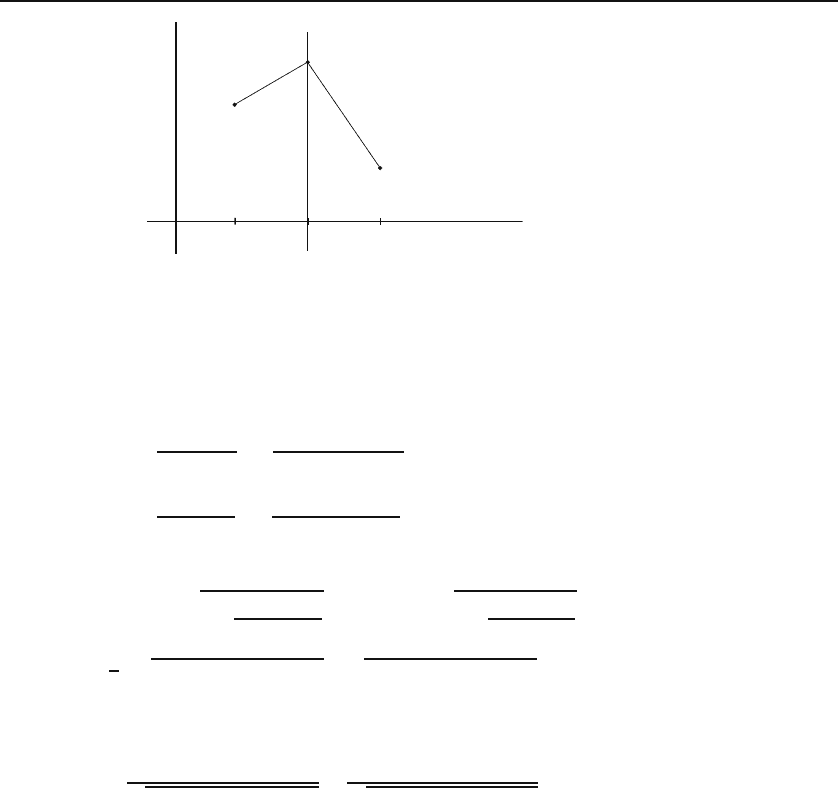
30.1 Variational Problem 729
P
a
b
a
y
x
P
Y
P
b
Figure 30.2: Here, a path consists of only two line segments. The middle point P
Y
is constrained to move on the vertical line on which it is located to produce different
paths.
The equation of the path can be shown to be
y(x)=
⎧
⎪
⎪
⎪
⎨
⎪
⎪
⎪
⎩
2(Y − y
a
)
b − a
x +
(a + b)y
a
− 2aY
b − a
if a<x<(a + b)/2,
2(y
b
− Y )
b − a
x +
2bY − (a + b)y
a
b − a
if (a + b)/2 <x<b.
Substituting this in the integral gives
L =
#
(a+b)/2
a
"
1+
4(Y − y
a
)
2
(b − a)
2
dx +
#
b
(a+b)/2
"
1+
4(y
b
− Y )
2
(b − a)
2
dx
=
1
2
*
(b − a)
2
+4(Y − y
a
)
2
+
(b − a)
2
+4(y
b
− Y )
2
+
.
Differentiating with respect to Y and setting the result equal to zero leads to the
following equation:
Y − y
a
(b − a)
2
+4(Y − y
a
)
2
=
y
b
− Y
(b − a)
2
+4(y
b
− Y )
2
.
Square both sides and simplify to get Y − y
a
= y
b
− Y , whose solution is Y =
(y
a
+ y
b
)/2, placing P
Y
on the line joining P
a
and P
b
. Thus among all the paths
P
a
P
Y
P
b
the shortest is the straight line joining P
a
and P
b
.
30.1.1 Euler-Lagrange Equation
The preceding example showed that from among paths consisting of two spe-
cific straight line segments, the one whose middle point lies on the straight
line joining the two end points gives the shortest length. What if the point
P
Y
is not on the perpendicular bisector of (a, b), or if the path has more than
three points? There is a procedure which picks the minimizing path from
among all possible paths. Let’s discuss this procedure.
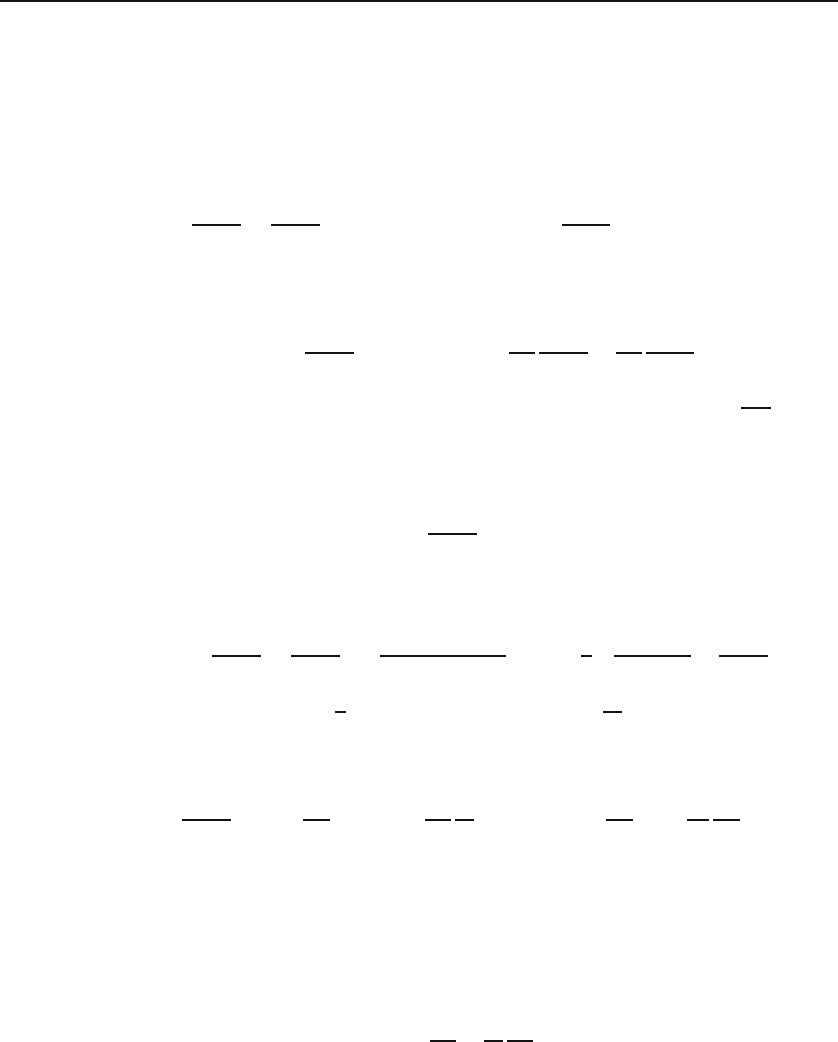
730 Calculus of Variations
Going back to Equation (30.2), we ask if there is a process whereby one
can take the derivative of L[x], set it equal to zero, and solve for the desired
path. Is there a derivative with respect to a path? To find out, let’s see if
Functional
derivative
explained
we can generalize (30.1) from the discrete case of a path consisting of only n
points to a continuous path. The derivative with respect to a path is called
a functional derivative and δ is used instead of ∂ to symbolize it. So, let’s
write
δL[x]
δx(τ)
=
δ
δx(τ)
#
b
a
L
x(t), ˙x(t),t
!
dt =
#
b
a
δ
δx(τ)
L
x(t), ˙x(t),t
!
dt. (30.4)
In analogy with (30.1), and noting that L is to be considered as an ordinary
function (not functional) of x,˙x,andt,wehave
δ
δx(τ)
L
x(t), ˙x(t),t
!
=
∂L
∂x
δx(t)
δx(τ)
+
∂L
∂ ˙x
δ ˙x(t)
δx(τ)
, (30.5)
because t is independent of x(τ). In the discrete case, we had
∂x
i
∂x
α
= δ
αi
.
What is the generalization of the Kronecker delta to the continuous case?
The Dirac delta function! This can be shown more rigorously, but the proof
is outside the scope of this book. So, let’s write the fundamental functional
derivative:
A fundamental
functional
derivative
δx(t)
δx(τ)
= δ(t − τ). (30.6)
What about the functional derivative in the second term of (30.5)? Using
the definition of the derivative and (30.6), we have
Another
fundamental
functional
derivative
δ ˙x(t)
δx(τ)
=
δ
δx(τ)
lim
→0
x(t + ) −x(t)
= lim
→0
1
δx(t + )
δx(τ)
−
δx(t)
δx(τ)
= lim
→0
1
δ(t + −τ) −δ(t −τ)
=
d
dt
δ(t − τ). (30.7)
Putting (30.6) and (30.7) in (30.5) and the result in (30.4), we obtain
δL[x]
δx(τ)
=
#
b
a
∂L
∂x
δ(t − τ)+
∂L
∂ ˙x
d
dt
δ(t −τ)
dt =
∂L
∂x
(τ) −
d
dτ
∂L
∂ ˙x
(τ), (30.8)
where in the last step we used the properties of the Dirac delta function and
its derivative as given in (5.10) and (5.11). We have assumed that τ lies in
the interval (a, b).
Having found the functional derivative, we now equate it to zero and find
the equation that determines the path—the function x(t)—which extremizes
the functional. The equation is
Euler-Lagrange
equation
∂L
∂x
−
d
dt
∂L
∂ ˙x
=0, (30.9)
andiscalledtheEuler-Lagrange equation. Itisattheheartofallvaria-
tional problems. If we know the function L, we can differentiate it, substitute
